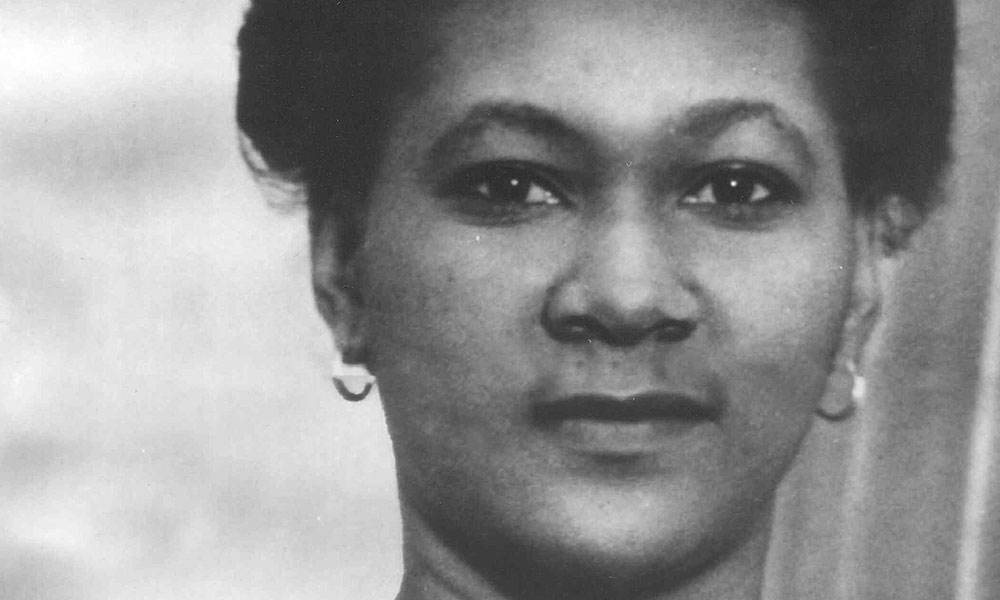Marcus Of The Woods

Marcus, a slave who had been born in St. Kitts, first drew attention in 1813 when he ran away from Hutchinson’s Estate and took refuge in the mountains. A listing of runaways that was presented to the Council, in September 1814 showed that he had been absent from the estate for ten months and was believed to have caused damage to provision grounds and three steers. He quickly gained a reputation as a “notorious runaway and depredator” and a reward was offered for his capture. By the end of 1815, he and several other runaways were in custody but because of insufficient evidence they were spared jail time. However the Council and Assembly felt that they had caused enough damage to warrant some sort of punishment. It was also feared that once discharged they would once again resort to their lawless ways. The solution was to have them spend time on the convict gang. Marcus and his companions were therefor bought “by the public” from their original owners and set to work at maintaining the roads and other public works on the island.
The Slave Register of 1829 shows a Marcus, who had been acquired by “purchase from the public”, among the enslaved workers of Anthony Cunyngham. He once again escaped from the estate in 1831 and led a small band of more than 30 runaways that were very active on the leeward side of the island between Stone Fort and Vambelle, well in sight of Brimstone Hill.
The activities of Marcus of the Woods intensified during the summer of 1834 when he was wanted for murder. He had a musket in his possession and knew how to use it. During the period of Martial Law that followed the Declaration of Emancipation, troops were sent into the mountains of the interior “in order to convince the Negroes, said to be concealed there, that their haunts are at any time accessible by troops.” Marcus was sighted on that occasion but the guide who was leading the military party gave their presence away.
In a letter dated the 11th August 1834, A.P. Pogson manager of Cunyngham’s claimed that “no order may be expected in the country unless he [Marcus] is taken.” A report to the Assembly in June 1834 showed that there were 94 enslaved persons absent from various estates on St. Kitts.
There is no evidence of Marcus ever having been captured again.
The Runaway of Mount Misery (1639)

In November 1639, more than sixty enslaved Africans from the Capisterre region, angered by the brutal treatment meted out to them by their owners, left their plantations and found refuge on the slopes of Mount Misery. They took with them their women and children and built a formidable camp upon the mountainside. It was protected by a precipice on one side and could only be approached by a narrow pass. From this position they carried out raids on the plantations.
To put an end to their activities, Governor De Poincy, who had just arrived on St. Kitts, raised a company of five hundred armed men. The stronghold was stormed by the soldiers and the uprising was crushed without much difficulty as the runaways were poorly armed and too few in number to offer much resistance. Most of them were killed in skirmishes. Some of the runaways were burnt alive, while the rest were captured, quartered, and their limbs exposed on stakes to serve as a warning to those who might be tempted to rebel.
However, one of their leaders, a gigantic man, escaped and continued to elude capture for three years and was able to carry on a one-man reign of terror from the forests of Mount Misery. He served as a rallying point for other discontented enslaved workers and was kept well informed of what was going on in the settlements. However, he continued to live apart from his fellow runaways, fearing that one of them might betray him in order to gain favour with the planters. His success in evading capture inspired many to think that he was aided by supernatural powers.
Realizing the danger that this situation caused to the French settlement on the island, De Poincy sent some half a dozen soldiers to track him down and capture him. The mission was kept secret to prevent the enslaved from giving him advance notice of what was to come. The soldiers pursued him and once they had him in their sights they blazed away at him. None of their muskets would go off probably du=e to the humidity on the slopes. The infuriated African sword in hand, charged them. The men fled and he was able to gain a musket and a hat. Again the rumor spread that the runaway possessed magical powers that protected him from fire arms.
Quickly the French Governor sent out another squad to seize him. Again the African was found and surrounded, again shots were fired and again he was not hit. However, the sergeant who must have kept his nerve more than his subordinates, shot him through the head. Once again his body was displayed as a deterrent to others thinking of escaping.
Samuel Benjamin Jones
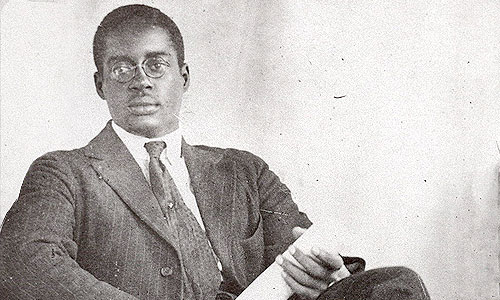
Samuel Benjamin Jones was born of humble parentage on the 25th April 1874 in Antigua. His father died when he was very young and he was raised by his mother and grandfather. His grandfather, who had been born a slave, ensured that young Samuel obtained both a primary and a secondary education. At the age of nine he was awarded a scholarship to the Antigua Grammar School, and became one of the Antigua Diocesan Students at Codrington College. Later he emigrated to the United States where he taught for a number of years at St. Ambrose Parish School, in Raleigh, North Carolina and for a short time at the Negro Agricultural and Technical College in North Carolina. In 1918 he married Anna Vivianne Dudley, daughter of Dr. James Dudley, the Principal of the College.
While in the US, Jones entered the medical profession and even furthered his studies in Scotland obtaining and Licentiate of the Royal College of Physicians (LRFP) through the University of Glasgow and a Licentiate of the Royal College of Surgeons (LRCS) through the University of Edinburgh. He eventually returned to the West Indies.
His first appointment in St. Kitts was as Acting Medical Officer for District No. 2 from April to August 1918. His office was then at the Newstead Building now part of Government Headquarters. He was later transferred to Anguilla where he served as Doctor and Magistrate from August 1918 to May 1923.
During his time in Anguilla, the island experienced four consecutive years of drought, food shortages, a hurricane and a quarantine period of several months due to the presence of small pox on the island brought on board a vessel from the Dominican Republic. Jones appealed to the people to be vaccinated and then appealed to St. Martin to try to procure more vaccines as those on Anguilla had been exhausted. The authorities in St. Martin would not allow Jones and his fellow doctor to land and the vaccine was placed on a long pole and eased over onto their boat. A 15 foot by 20 foot hospital was quickly constructed and the doctors and the islanders weathered the disease together.
In his reports, Jones showed great concern for the plight of the Anguillans population which was often on the brink of starvation. He stressed the immediate need for a small hospital and a district nurse to teach basic sanitation, and in 1921 applauded the efforts of two midwives who had learnt the need for basic cleanliness in the delivery room.
In 1936 Dr. Samuel Jones published Annals of Anguilla, his tribute to the unflinching courage displayed by all classes of the population of Anguilla in the face of overwhelming odds. It was his way of pointing out to the people of his time that they did have a past of which they could be proud. His opinion on the matter of Black pride was very clearly stated when he said, “I am firmly convinced that very little substantial progress can be made by any race which has not learned to reverence its forebears, no matter what they were, and to think of them as men who had done heroic deeds, making the race great by their strong efforts in the past.”
In 1924 Jones returned to District 2 in St. Kitts. In 1935 the Administration considered giving him a country district so as to give the Basseterre area to Dr. Branch. Branch had been ill and it was felt that it would be better for his health to serve as a doctor in town. However the Administrator was worried as to how this move would be interpreted particularly following the Buckleys’ labour disturbances and the growing awareness of racial discrimination among the population and in the end Jones remained in District 2 until his retirement in 1939.
His main concern, at this time, was the prevalence of syphilis and intestinal worms particularly Bilharzia. He made extensive field studies, used the laboratory to keep track of the disease and ensured that patients received the necessary medications. He also made contributions to medical journals. His efforts against epidemic outbreaks especially in the case of a small pox epidemic lead to the award of an honorary title of Order of the British Empire (OBE) in 1933.
Dr. Jones retired from active Government service in 1939. However during the Second World War he was appointed Information Officer. He also served as a member of the Board of Education and the Social Welfare Advisory Committee.
His ability to empathize with the masses earned Jones their admiration and respect. He did not hesitate to provide free medical service to those in financial straits. His commitment to the well being of the community often led to strong expressions of opinion on matters of principle. He also participated in such popular activities as baby shows, which afforded him the opportunity to encourage better standards of nurturing among nursing mothers
A well-read and highly informed individual, Jones was willing to share his knowledge with others and was often called upon to give public lectures. His sound philosophy of life, his lucid style and his liberal use of anecdotes captured and sustained the undivided attention of his audience. Within the Jones’ household everyone was encouraged to discuss local and foreign events that were reported in the local press. Although they had no children of their own, Dr. Jones and his wife raised and educated several. He was also a strong supporter of Mariam Pickard and the newly founded Girls’ High School.
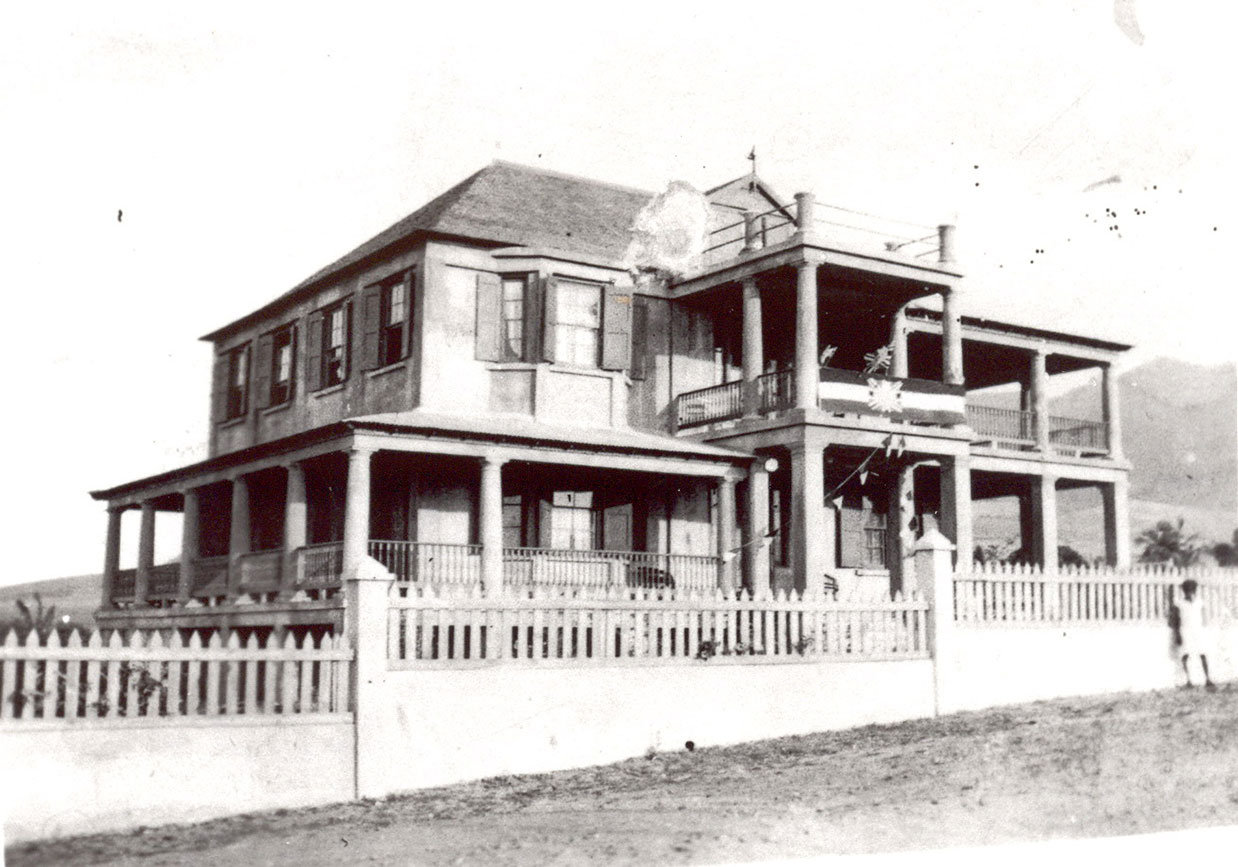
Dr. Jones’ home, Koromantyn Lodge at Wigley Avenue, contained a well-stocked library which was continually enriched by subscriptions to literature written by black people about black achievement. . Local creative artists were encouraged in their talents. Works Eva Wilkin, Cynric Griffin and Aimee Dinzey decorated the walls of his house. Attendance at the best of local concerts and recitals was a must for the Doctor’s household.
Dr. Jones was a serious advocate of the Grow More Food Campaign that was introduced in St. Kitts and Nevis during the war. He showed the high nutritional value of various kinds of locally grown food and criticized the Precedency’s dependence on imported foodstuff. The grounds of the Lodge exemplified his commitment. They contained a wide variety of tropical fruits and vegetables, and choice goats, fowls and turkeys were raised as lessons in animal husbandry. Mrs. Jones shared her husband’s interests and parties at their house featured home-grown and home-made refreshments.
Dr. Samuel Benjamin Jones died at his home on Friday 11th November 1949 at the age of seventy-five. For his funeral, St. George’s Anglican Church in Basseterre was full of mourners and many had to be content to follow the service from the church yard. It was reported that no less than one hundred cars were in the funeral procession.
Edward Margetson
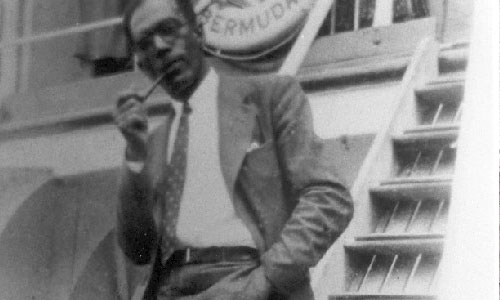
Edward Margetson was born in Parsons on the 31st December 1892. Music was in his blood, in fact it had brought his parents together. His father Henry Francis Margetson was a choral director and his mother, Marie (nee Thomas) was considered the finest pianist of her time. It was therefore no surprise that young Edward showed signs of musical talent at a very early age. At age five, when his feet could barely reach the pedals, listeners thought that his rendition of funeral hymns following his mother’s death was really his father at the piano.
As a youth, Teddy Margetson attended the St. Kitts Grammar School. He was also encouraged by his grandmother to teach himself music and at fourteen years of age he filled the vacancy of organist at the St. George’s Anglican Church in Basseterre. His next appointment was at the Moravian Church where he served as both organist and choir director until June 1919. The Moravians also had a brass band - the only one on the island at that time. It played at church functions but when the First World War broke out it marched through the streets of Basseterre rallying support for the Mother Country. The baton that lead the band was in the hands of Teddy Margetson.
The loss of the family fortune made a career in music impractical and in April 1910 he first found work as a copyist. In July of that same year Margetson was employed as a junior clerk at the Treasury. In the years that followed he acted as Revenue Officer, Tariff Clerk and Cashier.
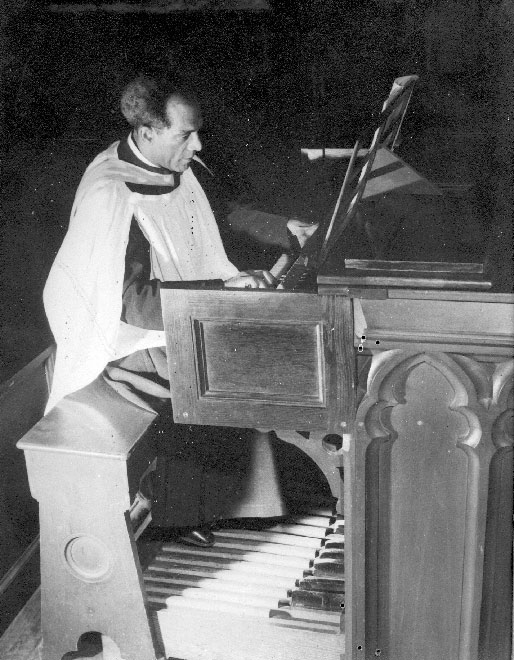
In 1919 Margetson decided to go to the United States. It meant making do with a lot of things until he had the musical education that he had dreamed of. Soon after his arrival in New York, Margetson took on the post of Organist and Minister of Music for the Church of the Crucifixion, and continued to hold that post until his retirement. He attended Columbia University in 1921, 1922 and from 1924 to 1926 where his compositions features in annual concerts.
He returned briefly to St. Kitts on the 18th August 1923. Margetson also excelled at cricket and during his time on the island helped to orgainse the Progressive Cricket Club. He also contributed ARTICLES ON CRICKET MATCHES TO THE LOCAL PRESS.
His love for writing was not limited to graphic sports commentaries. Margetson was an active member of the Mutual Improvement Society and his talents extended into the field of poetry and essay writing. He also assisted W.A.H. Seaton with the editing of the monthly paper. His interest in the Society’s activities continued even after he had settled in the United States.
The Margetsons returned to New York in 1924 where he attempted to raise the standards of sacred music in the African-American community. Margetson, saw music as “a sanctuary, a haven of contentment” and he longed to share that enjoyment with others. In 1927 together with his sister Marie, he organised the Schubert Society. The name was chosen because, because Schubert was the man who more than any other, made music for pleasure rather than for profit.
Most of the original members of the Society had migrated from the West Indies. The New York Amsterdam News of the 27th June 1992 said the existence of the society is believed to have helped open the door for black classical musicians, who at the time may have been denied the opportunity to sit as members of established orchestras in this city and state.
He was the recipient of various honours and awards. In 1925 he won the Victor Baier Fellowship in Church Music and two years later was awarded a medal by the William Harmon Foundation. Other awards included the Joseph Mozenthal Fellowship in Composition (1934). Margetson’s rendition of The Passion according to Matthew by Johan Sebastian Bach during the Easter season of 1938 was said to have been the first time that that difficult composition was attempted by anyone in New York City. In 1943, the American Academy of Arts and Letters and the National Institute of Arts and Letters gave him a grant of $1000 recognizing his “remarkable work as a composer of a capella music and as the director of a choral group devoted to the finest standard of songs”. The Rosenwald Foundation of Chicago, which had a special interest in African American education, made him a similar award for composition and the creation of a choral group dedicated to the finest standards of song.
Dr. Daniel Mason , the head of the Music Department at Columbia University in an article in The Herald Tribune of the 3rd May 1943 said:
There is in Margetson’s best work a directness, a wholeheartedness, and therefore a persuasive power that is rare nowadays.
In commenting on the significance of these awards, Mason noted that Margetson had been
working quietly among his people in Harlem for nearly a quarter of a century has made in his unostentatious way a contribution, far deeper than many showier ones, both to our creative musical art and to our social democracy.
Margetson’s quiet and unassuming personality encouraged confidence in those who came in contact with him. His unpretentious contributions continued to span the miles to reach his homeland. In 1948 at the height of the Thirteen Week Strike, Rufus King travelled from England to St. Kitts in order to mediate between the Trades and Labour Union and the Sugar Association. He stopped in New York to visit Margetson who expressed concerns over the plight of the island and urged the restoration of peace between the battling sides.
Failing health forced Margetson to retire as Director of the Society in 1960 and on the 22nd January 1962, he passed away leaving behind a wealth of musical compositions.
Selwyn MacDonald 'Lalaps' Liddie
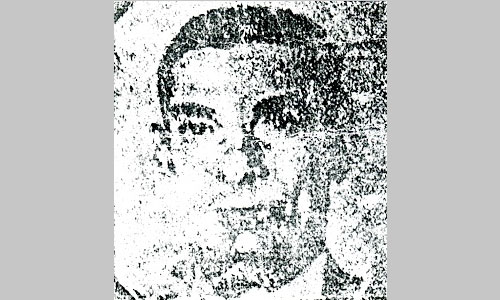
Selwyn MacDonald “Lalaps” Liddie was born on the 28th January 1912. His father was George Whattey and his mother was Emily Liddie of Irish Town, Basseterre. At an early age he learnt the artistry of the kettle drummer, and soon became an lead clown dancer and a troupe organiser.
Lalaps childhood took place in a St. Kitts that offered very few chances of advancement to the working class person. The sugar estate dominated every aspect of life on the island and the rhythm of crop time and dull season set the pace for the year’s activities. Being a townsman, Lalaps was not associated with any particular estate and he further escaped life in the canefields by becoming a longshoreman. But when at Christmas time the regimentation of a sugar producing society was cast aside he joined the merry making with a vigour that was unsurpassed.
The Clowns were, for a long time, only one of the many sports that came out on the streets during the Christmas season. They seem to have made their appearance around the turn of the 20th century. However the restrictions brought on by the war in the 1940s and the increasing emigration of workers in the 1950s, caused a decline in the number of troupes on the streets and the number of participants in each troupe. Clown troupes were once known to have as many as fifty members and their musical instruments used to include the tambourine, chopping reel, triangle, shack pan and bamboo fife. The members of the troupe presented their “heave-ho” and “goo-dung” dances to the slow music of their band and sent spectators scampering to avoid the lash of the hunter.
Liddie’s enthusiasm and organizational skills marked him as a leader. He was respected as such by both the performers in his troupe and the spectators who viewed them throughout the island. Lalaps’ troupe and musicians practised seriously to prepare themselves for the activities of the Christmas week and early on Boxing Day they were ready to take to the streets. At around 5.00am Lalaps, would find himself on the street with the Big Drum awakening those still sleeping with his incessant and infectious “dung tung” beat. He himself had all the percussion instruments for that band. Keeping him company would be men like Mr Sweeney with the fife and Rum Basa playing bass. By 8.30am they would go their separate ways to join other sports. Selwyn Liddie would then head out with his clown troupe. The rest of the week till New Year’s Day would find them touring the villages around the island to the delight and perhaps even fear of those who lived there.
Lalaps played clown for over thirty years. His enthusiasm for the sport was shared by his wife Sybil Martin, known to her friends as “Bill”. Preparations for the yearly street performances started early. Bill made the clown hats for the troupe out of shoe boxes she would have collected from Bata and using ribbon she made the rosettes that every clown had to wear if he was to be a recognised member of a troupe. During the season she would cook a stew of tripe for her husband and the musicians in the band. But domesticity was not the end of Bill’s contribution. Her brother had taught her how to play the violin and she learnt the guitar from a close friend. Music and rhythm were in her soul. While the Clown Leader rested for an hour or so in the afternoon, she would take up his costume and go out to dance. On her return to the household Lalaps would resume his performances.
When age started taking its toll on Lalaps, the mantle of leadership of the clowns was taken up by Long Liner. However Liddie could not give up his joyous participation in the sports. He travelled abroad with clown troupes on several occasions. The zenith of his career came in 1972 when he led a troupe to participate in the first Caribbean Festival of Arts (CARIFESTA 72) in Guyana. In the last few years of his life Liddie supported himself by washing dishes at the Fort Thomas Hotel but his frequent visits to the rum shop had taken their toll on his health. The legendary clown died on the 7
th
July 1974.
National Archives
Government Headquarters
Church Street
Basseterre
St. Kitts, West Indies
Tel: 869-467-1422 | 869-467-1208
Email: NationalArchives@gov.kn
Website: www.nationalarchives.gov.kn
Follow Us on Instagram

